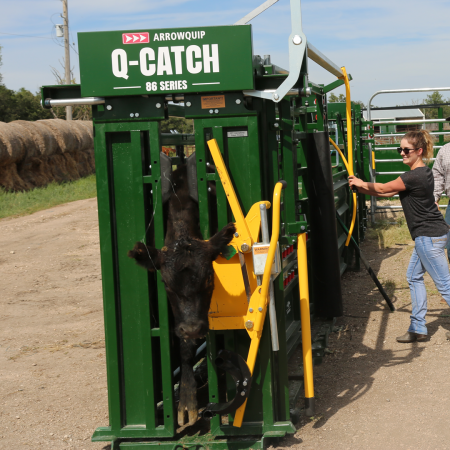Cattle Crushes - The Myths About Safety & Design Debunked

This four-part series takes the biggest myths about cattle chutes and turns them on their heads! Over the next few weeks, we will cover 20 of the most common misconceptions about cattle chutes and debunk them with data straight from the experts.
1. Myth: I don't need a cattle chute.
FACT: Dr. Larry W. Olsen of Clemson Extension disagrees. "A squeeze chute is essential when working cattle. You can easily spend the price for one in a hospital emergency room for broken arms, ribs and/or legs or even more life threatening injuries.À He further states that 99.9% of all people and cattle injuries and deaths occur in the chute area, and most could be avoided with the correct equipment.
2. Myth: You don't need training prior to operating the chute.
Busted by UC Davis. FACT: All cattle handlers need to be trained and the chute should be inspected prior to every use. If there is anything wrong with it, red flag it, and don't use it. At Arrowquip, we manufacture our chutes to the highest safety standards, and our dealers can help provide training or a safety checklist for you and your employees, specific to your chute.
3. Myth: Cattle chutes are safe.
FACT: Actually, four areas of the chute can pose a safety risk when used improperly: the head gate, side squeeze, side exit/access, and rear gate. (Source: UC Davis). Review the first myth, and Dr. Olsen's comments. Proper cattle handling plays a huge factor in the safety of your chute, as well as choosing the right equipment.
4. Myth: Chutes can be located anywhere on the ranch.
FACT: According to Ohio State University Extension, there are five factors to consider when locating a working facility for cattle:
- "Accessibility in various weather conditions;
- Proximity to various pasture sites;
- Condition of pasture fence in proximity to corral;
- Drainage from corral is acceptable;
- Electricity and lighting are available; and
- Proximity to neighbors.À
5. Chutes should have straight lines in the queue section.
FACT: A queue with curved lines cam improve the movement of animals in larger systems. In a curved queue the animals can always see each other, and don't see the chute until they are almost upon it. (Ohio State Extension).
MYTHBUSTERS PART 2 - CHOOSING THE RIGHT CATTLE CHUTE
About the Author

Dana Charban
As a small town girl from rural Manitoba, Dana Charban grew up around agriculture and farming her en...More Information on Dana Charban
Email Dana Charban:


Comments
Join the Discussion
Comments